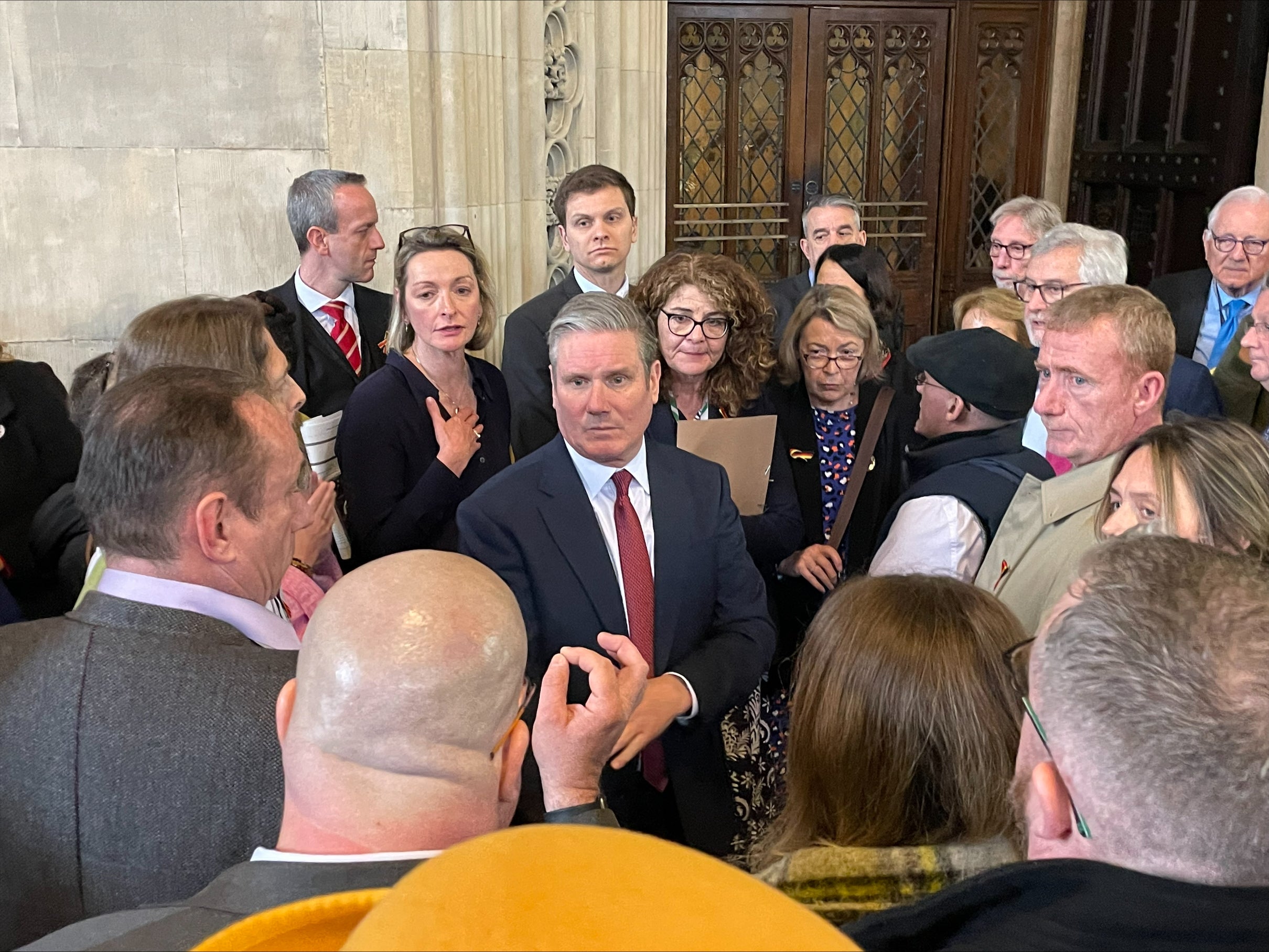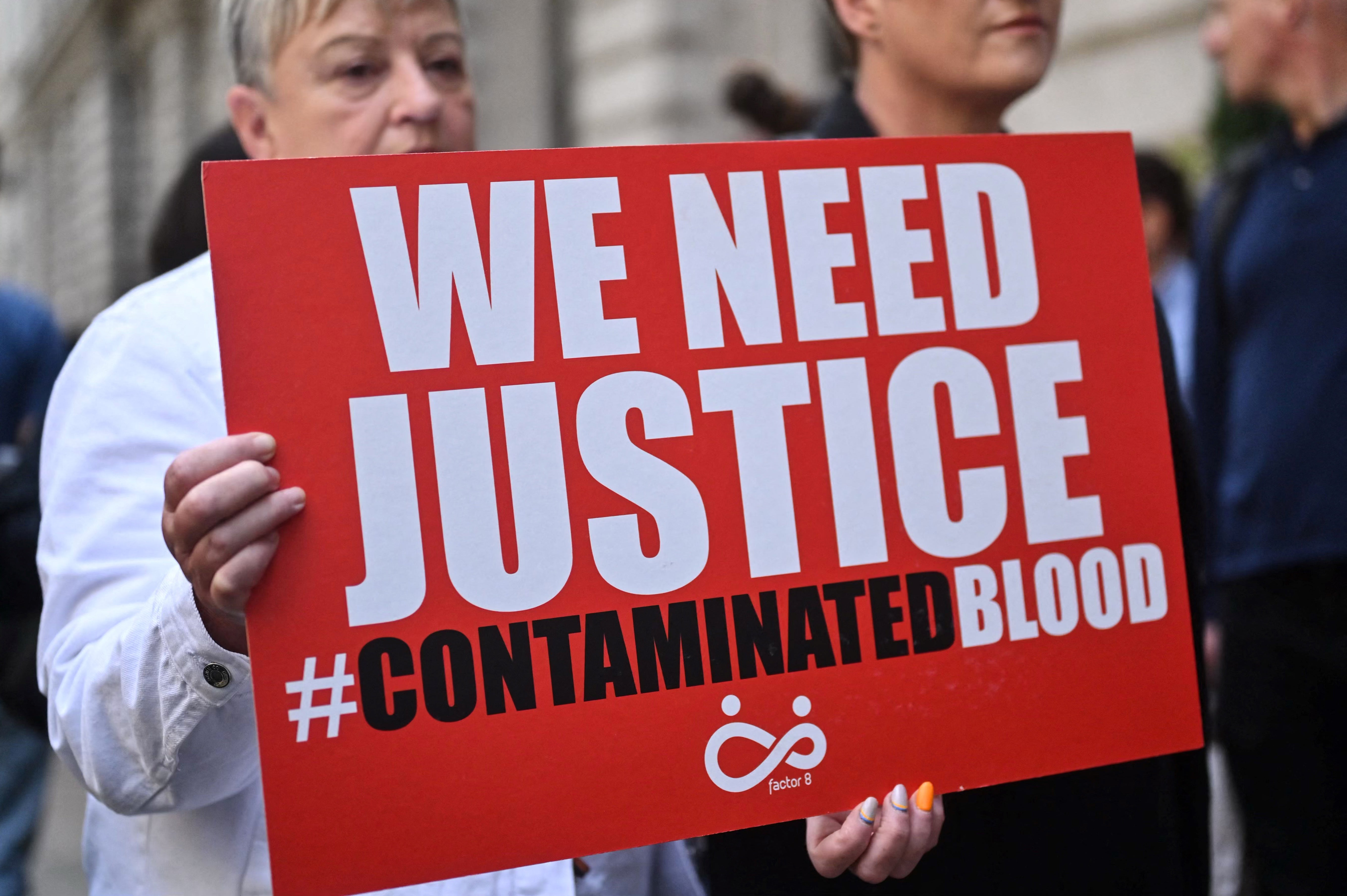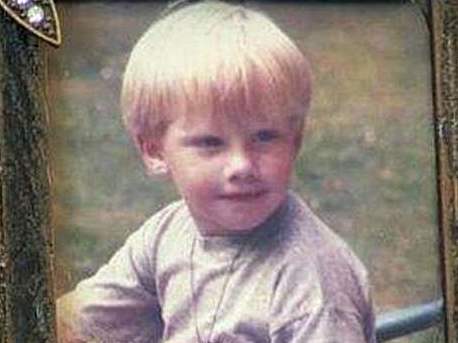
A public inquiry into the long-running infected blood scandal is due to publish its findings today, with a compensation scheme running into the billions thought to be amongst recommendations.
The scandal concerns over 30,000 people in the UK who were infected with deadly viruses during the 1970s and 1980s due to contaminated blood products.
The latest evidence submitted to the inquiry suggests that nearly 2,000 of victims are living with undetected hepatitus C as a result of the scandal.

The far-reaching inquiry, formed in 2017, will determine where responsility lies with the scandal, amid allegations of a decades long cover-up by the NHS.
It will also recommend compensation for victims, and attempt to conclude how many people have been affected both directly and indirectly.
Here’s everything you need to know about the infected blood scandal ahead of the inquiry’s final report:
What is the infected blood scandal and how many have been affected?
During the 1970s and 1980s, over 30,000 people in the UK were infected with HIV and Hepatitis C after receiving contaminated blood products.
There were two main groups caught up in this wide-scale maltreatment. Firstly, haemophiliacs – people with a rare bleeding disorder preventing their blood from clotting properly.
A new treatment was developed in the 1970s to replace the clotting agents that are absent in the blood of haemophiliacs, called Factor VIII and IX. They were produced from donated human blood plasma.
Years later, it would be revealed that entire batches of this plasma were infected with deadly viruses.
Thousands of victims developed HIV and hepatitis C as a result. The ongoing inquiry estimates that 1,250 people with bleeding disorders developed both, nearly a third of whom were children.

Around two-thirds later died of Aids-related illnesses, with an unknown amount transferring HIV to their partners.
A further 2,400 to 5,000 developed hepatitis C only, although experts have not been able to find an exact figure as symptoms can show up years later.
The second group affected were people given contaminated blood transfusions after childbirth or medical treatments between 1970 and 1991.
The inquiry estimates that 80 to 100 of these people were infected with HIV, while around 27,000 were infected with hepatitis C.
The Haemophilia Society charity estimates that between the announcement of the inquiry in 2017, and the final report to be published in May, 650 people will have died as a result of the scandal. They say that overall, it has take the lives of over 3,000 people.
How did the infected blood scandal happen?
In the early 1970s, the UK had not acheived self-sufficiency in blood donations, meaning the government had to look elsewhere to ensure the supply of blood and related products met increasing demand.
The NHS began using foreign supplies from the US. While it did not import whole blood, large quantities of Factor VIII were imported.
However, much of the blood the plasma product was taken from had been bought from high-risk donors like prison inmates and drug users. When all of their plasma was pooled together, it would take just one person carrying a virus to potentially infect the entire batch.

It has been alleged that prison systems in the US made huge profits from selling the blood of inmates between the 1960s and 1980s.
It wouldn’t be until 1985 that all Factor VIII products were heat-treated to kill the HIV virus. UK blood donations were not routinely screen for Hepatitis C until 1991.
Did the government know about the risks?
This is one of the key questions the inquiry sets out to answer. Evidence suggests that by the mid-1970s, there were many warnings that blood donations from the US carried risk of viral infection.
But, as the UK’s efforts to become self-sufficient in its blood supply faltered over the next few years, the donated blood continued to be used.
Official documents from the 1990s also show that cost concerns prevented the NHS from pursuing adequate testing or campaigns to raise awareness, the BBC reports.
“Raising awareness poses undoubted difficulties for the NHS,” one internal government note says.
“In terms of value for money, there may be better candidates for additional resources.”
Bereaved campaigners have claimed that their relatives were “used for research” in light of the historical documents. The Factor 8 campaign group alleges that use of Factor VIII continued even after an association was made between hepatitus C and the treatment.
Director Jason Evans said: “The fact that this could happen on such a scale, over such a long period of time, is almost incomprehensible.”
So far, no organisation implicated in the scandal has admitted any liability.
What will the Infected Blood Inquiry acheive?
Following years of campaigning by those affected by the scandal, the government established the Infected Blood Inquiry in 2017.
Chaired by Sir Brian Langstaff, the Inquiry set out to examine the circumstances around the scandal. This includes how many people were infected, those resposible for the failures, and whether there were any attempts to conceal the scandal.
In August 2022, around 3,000 surviving victims were awarded interim payments of £100,000 each at the recommendation of Sir Brian. He called for them to be made “without delay” given the high mortality rate of those infected with HIV and hepatitus C.
Sir Brian has also called for interim compensation to be offered to parents and children of those affected, who were not included in the 2022 payments. He estimates that the cost of the final compensation scheme will likely run into the billions.
In April 2024, the government relented to support a Labour amendment to the Victims and Prisoners Bill which would mean the final compensation scheme for those affected by the scandal will be set up within three months of the legislation becoming law. It is currently in the House of Lords.







